|
|
Günter Raphael (Composer) |
|
Born: April 30, 1903 - Berlin, Germany
Died: October 19, 1960 - Herford, England |
|
Life |
|
The German composer, Günter Raphael, is surrounded from his earliest years by his family’s cultural tradition. His father Father, Georg Raphael (1865-1904), since assimilation of Jewish citizens was in keeping with the spirit of the time - but especially because of his love to J.S. Bach’s music - he converted to the Protestant confession. He began studying medicine and then music; he was engaged as a church musician at the Luther Kirche and later became the music director of the Matthäi Kirche in Berlin. He composed: various psalm settings, choral motets, sacred songs, works for organ, violin and for orchestra. His mother, Maria Becker, was a violinist. His grandfather, Albert Becker (1834-1899), was an important Berlin composer and church musician who came from a long line of church music directors dating back to the early 1600s (from Quedlinburg)]. There Günter Raphael acquired an extensive knowledge of classical and humanistic literature. The comprehensive libraries of his father Georg R. and his grandfather A. Becker gave him access to the entire music literature.
In 1913 Günter Raphael wrote his first composition is a short "Lied" for piano. As viola player and pianist, he played and worked through the complete chamber music and violin repertoire with his mother. In addition he studied the piano and organ literature as well as all other available scores from the past centuries. In 1918, according to his own diary, he published Op.1 is a Rondo for violin, viola and piano. By the age of eighteen he was familiar with every known score, is at home with all musical styles and has already acquired the skills of a composer on his own. He took private composition lessons from Arnold Ebel. In 1922, because of his extraordinary entrance examination results to attend the Berlin University of Music, he was awarded the Robert Schumann Leipzig Foundation Scholarship and studied composition with Robert Kahn. However Kahn - like Arnold Ebel before him - was hardly capable of teaching Raphael anything he did not already know.
In 1923, Karl Straube, Thomaskantor in Leipzig and a friend of his father, became Günter Raphael’s mentor and advisor. In 1925, on Karl Straube’s initiative, he received private instructions with Arnold Mendelssohn in Darmstadt. The premiere in Berlin of his First String Quartet in E minor was performed by the Busch Quartet. In 1926, the Second String Quartet in C major was also premiered by the Busch Quartet in Berlin. He signed his first contract with Breitkopf & Härtel and moved to Leipzig, where the first performance of his Symphony Nr. 1 was conducted by Wilhelm Furtwängler with the Gewandhausorchester Leipzig.
From 1926 to 1934 Günter Raphael taught music theory and composition at the State Conservatory of Music in Leipzig. In 1934, under the Nazi regime’s nomenclature, he was declared to be a "half-Jew”, which in turn forbids all professional endeavors and the performance of his music. At the end of the summer semester he lost his teaching position at the Leipzig Conservatory. He married his Danish student, the pianist Pauline Jessen, in Copenhagen and they moved to Meiningen (Thuringia) where Jessen already held a teaching position. It was there that two daughters Dagmar and Christine were born eight years apart. (Christine Raphael became a solo violinist and performer of the complete violin compositions of her father). During the course of this year, Raphael contracted a life threatening tuberculosis that would force him to undergo numerous operations and spend extended periods of time in sanatoriums. From 1934 to 1945, not to be diverted in spite of his illness, miserable hospital circumstances, professional ostracism and the increasing mortal danger posed by the SS (especially after 1941), he continued to compose profusely. His doctors often protected him from imprisonment by the Nazis.
From 1945 to 1949, his tuberculosis forced Günter Raphael to move to Laubach (near Gießen) to reside in the vicinity of his friend and surgeon, Professor Franz Volhard. It was very difficult for him to regain recognition after the war, he had been banned too long from German musical life by the Nazis. Though he helped his collegues through the procedure of denazification giving them a new chance, ironically enough there was no support for him. Even though he found publishers for the unpublished pre-1945 compositions and the radio stations re-opened their doors for him, it was impossible to reclaim his pre-war musical status such as the teaching position he had held in Leipzig. Together with his wife Pauline they performed as a piano duo, giving numerous concert tours and radio broadcasts.
In 1948, Günter Raphael was granted the Franz-Liszt-Award for composition. (His grandfather, Albert Becker had received that same award seventy years earlier.). From 1949 to 1953 he taught at the Duisburg Conservatory of Music. His students included Kurt Hessenberg. During this period a further operation and a ten-month stay at a sanatorium in Uppsala (Sweden) was financed by the Swedish government. In 1956 he was offered the position of Thomaskantor in Leipzig which he declined, not wishing to lose his artist freedom in East Germany. He became a lecturer at the Peter Cornelius Conservatory of Music in Mainz and at the Cologne University of Music. In 1957 he was appointed Professor at the Cologne University of Music.
Günter Raphael died in 1960 in an ambulance en route to Herford as a result of his long-standing illness. In 1968 he was posthumously awarded the title "Senator of Honour” at the Felix Mendelssohn-Bartoldy University of Music in Leipzig. |
|
Works |
|
Günter Raphael's compositions, listed in his official website (see below), include five symphonies, concertos for violin and for organ, six string quartets, numerous solos and duos for strings and winds with and without piano of which several have been recorded (an oboe sonata is on CD); as well as organ, piano and choral works. He was also responsible for arranging for performance in the late 1920's the first Antonín Dvořák cello concerto (A major, 1865) when its piano and cello score was discovered. He was also an editor of Classical and Baroque scores for Breitkopf & Härtel, preparing editions of, for example, flute sonatas by Frederick the Great and works by Antonio Vivaldi and J.S. Bach. (Some of these can be found in the Cornell University Library.) |
|
Compositional Style |
|
Günter Raphael was an extraordinarily versatile and prolific composer who contributed numerous symphonic works along with works for oratory (Requiem), vocal solo, chorus (sacred and secular), organ, as well as a rich chamber music legacy.
Characteristic for his work is the continuous dialogue with tradition; over the years he developed a style of unmistakable individuality, equally portraying lush sound and polyphonic structures. His music radiates a strong spiritual and intellectual concentration, not the lthrough his eminent contrapuntal mastery and his enjoyment in combining prominent melodic elements with a clear formal sense; yet there is as well an inventive abundance of rhythmic elements.
Despite a dreadful personal fate, Raphael’s humour - very familiar to his friends and students - plays an essential role in several of his works. Just as audible, though, are numerous depressive traces of the "silent period of his life”.
His early composition style , bound in part to tradition, made the music world listen because of his very personal thematic writing combined with a versatile developmental artistry. Having to work under the worst of circumstances, Raphael’s unceasing creativity resulted in the development of an unmistakable and unique style. The works from the early 1940s examplify this personal style. His late period demonstrates an approach to the 12-tone music, which Raphael significantly describes as "tonal 12-tone”. |
|
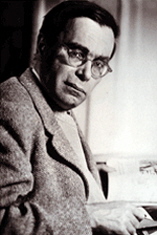 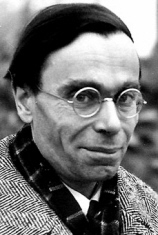
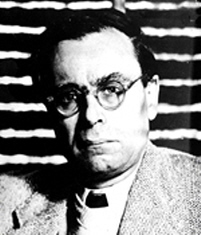
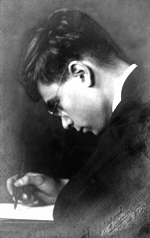 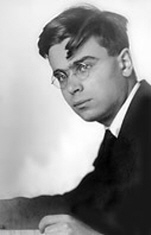
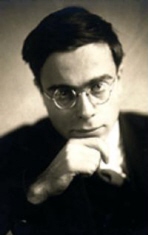
|
|
Source: Günter Raphael Website; Wikipedia Website
Contributed by Aryeh Oron (December 2005) |
|
Use of Chorale Melodies in his works |
|
Title |
Chorale Melody |
Year |
|
Ach Gott, vom Himmel sieh darein Chorale Prelude for Organ, Opus 1 |
Ach Gott, vom Himmel sieh darein |
1922 |
|
Chorale Partita for Organ Ach Gott, vom Himmel op. 22 |
Ach Gott, vom Himmel sieh darein |
|
|
Fantasie über den Choral Christus, der ist mein Leben Organ |
Christus, der ist mein Leben |
1968 |
|
Durch Adams Fall ist ganz verderbt, Chorale Prelude for Organ, op. 27, no. 2. |
Durch Adams Fall ist ganz verderbt |
|
|
Chorale-Motet Erhalt uns, Herr, bei deinem Wort, for 5-voice mixed choir a cappella, Op 30, No. 2 (Leipzig, Wiesbaden, Berlin, London, N.Y., Brüssel : Breitkopf & Hartel, cop. 1932; Wiesbaden Breitkopf und Härtel 1960) |
Erhalt uns, Herr bei deinem Wort |
1932 |
|
Herr Gott, dich loben alle wir , op.84, A, Bar, chorus, ob, va, vc, org |
Herr Gott, dich loben alle wir |
1959 |
|
Links to other Sites |
|
Günter Raphael, Komponist (1903-1960) (Official Website) [English/German]
Günter Raphael (Wikipedia, the free encyclopedia) |
Günter Raphael (Meiningen Museum) [German]
Günter Raphael [French] |
|
Bibliography |
| |
|
|